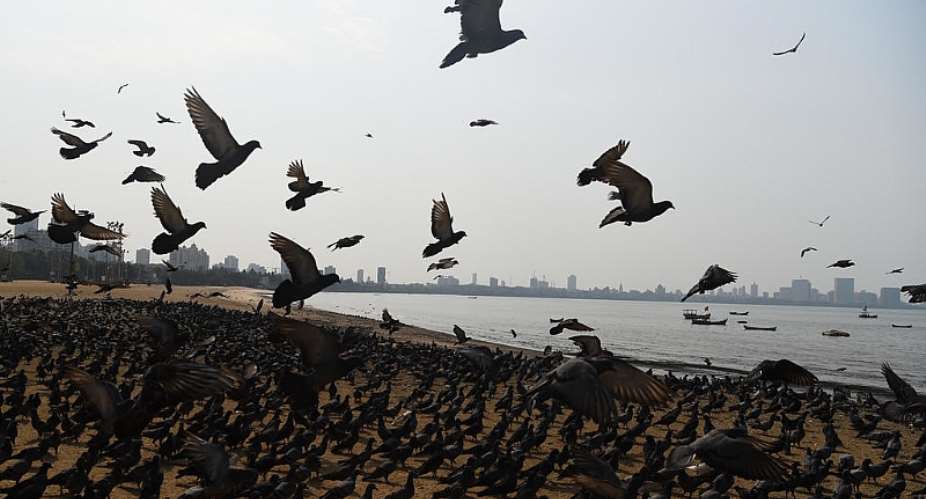An outbreak of bird flu in India has hit the capital Delhi as it continued its spread across at least nine states, with officials saying tens of thousands of birds would have to be culled.
The avian flu has been confirmed in Kerala, Rajasthan, Madhya Pradesh, Mahrashtra, Himachal Pradesh, Haryana, Delhi, Gujarat and Uttar Pradesh states.
Several states have reported deaths of birds, including poultry fowl, crows, pigeons, peacocks and migratory birds.
In Maharashtra, which last reported cases of avian influenza in 2006, animal husbandry commissioner Sachindra Pratap Singh said orders have been issued for culling birds within 1 km of the epicentre in Parbhani and Latur.
“A 10-km surveillance zone has been created and we are keeping very strict watch on the situation,” Singh said.
The state has confirmed bird flu after 800 chickens found dead at Murumba village in Parbhani district.
"Three days ago, the chickens in Murumba village died due to bird flu. The administration had sent blood samples of dead chickens to National Laboratory. Reports confirm that the chickens died of bird flu," said a district official.
In northern Uttar Pradesh, authorities are putting in place several precautionary measures, while urging people to avoid going to zoos and bird sanctuaries and coming in contact with any kind of bird.
Authorities have been asked to ensure that any unnatural death of a bird is reported.
'Infected zone'
In the southern state of Kerala, the process of culling about 50,000 birds, mostly poultry farm ducks, has been completed in two affected districts.
The virus was first reported in 1996 in geese in China. Since then, outbreaks have been reported periodically across the world. Outbreaks of bird flu have occurred in Asia, Africa, North America and parts of Europe.
In India, culling is done in a radius one kilometre from the site of infection, which is called the 'infected zone'. This means all domestic birds present in commercial farms, backyard farms or live bird markets in the infected zone are culled.
Bird flu is the name used to describe a viral infection that is reported mostly in birds, but has the potential to affect humans and other animals.
The most common strain of the virus that causes severe respiratory disease in birds is H5N1; various other strains like H7, H8 too, cause infection.
Culling was earlier done only to stop the viral disease from spreading to birds in other farms outside the infected zone. It is now also aimed at protecting humans, ever since the first transmission to humans in 1997.





 Lay KPMG audit report on SML-GRA contract before Parliament – Isaac Adongo tells...
Lay KPMG audit report on SML-GRA contract before Parliament – Isaac Adongo tells...
 Supervisor remanded for stabbing businessman with broken bottle and screwdriver
Supervisor remanded for stabbing businessman with broken bottle and screwdriver
 NDC watching EC and NPP closely on Returning Officer recruitment — Omane Boamah
NDC watching EC and NPP closely on Returning Officer recruitment — Omane Boamah
 Your decision to contest for president again is pathetic – Annoh-Dompreh blasts ...
Your decision to contest for president again is pathetic – Annoh-Dompreh blasts ...
 Election 2024: Security agencies ready to keep peace and secure the country — IG...
Election 2024: Security agencies ready to keep peace and secure the country — IG...
 People no longer place value in public basic schools; new uniforms, painting wil...
People no longer place value in public basic schools; new uniforms, painting wil...
 'Comedian' Paul Adom Otchere needs help – Sulemana Braimah
'Comedian' Paul Adom Otchere needs help – Sulemana Braimah
 Ejisu by-election: Only 33% of voters can be swayed by inducement — Global InfoA...
Ejisu by-election: Only 33% of voters can be swayed by inducement — Global InfoA...
 Minority will expose the beneficial owners of SML, recover funds paid to company...
Minority will expose the beneficial owners of SML, recover funds paid to company...
 Prof. Opoku-Agyemang has ‘decapitated’ the NPP’s strategies; don’t take them ser...
Prof. Opoku-Agyemang has ‘decapitated’ the NPP’s strategies; don’t take them ser...
